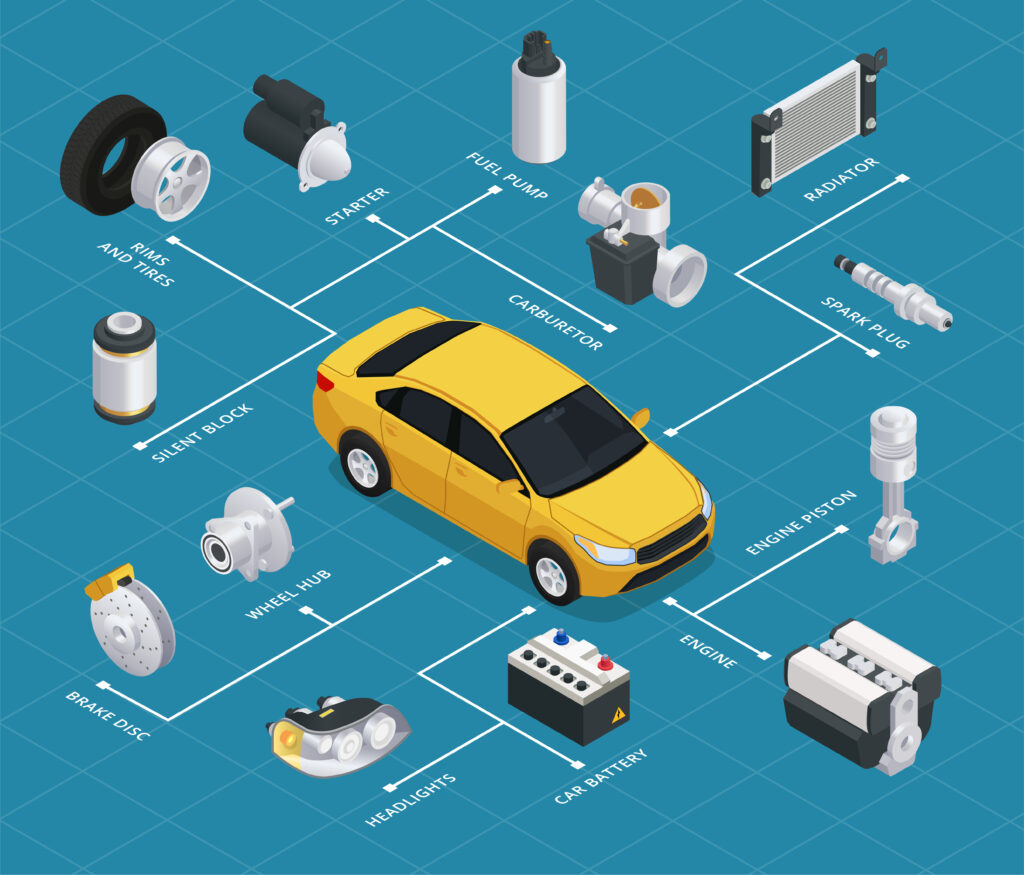
Vehicles, whether they are cars, trucks, motorcycles, or buses, are intricate machines composed of various essential components. Understanding the main parts of a vehicle is not only valuable for enthusiasts but also crucial for all drivers and vehicle owners. This knowledge empowers individuals to comprehend their vehicles better, ensuring proper maintenance and safe driving practices. In this article, we will delve into the key parts that make up a vehicle and their functions, shedding light on the complexity that lies beneath the surface.
1. Engine: The Heart of the Vehicle
The engine is undeniably the most vital component of any vehicle. It converts fuel into mechanical energy, propelling the vehicle forward. Engines come in different types, including internal combustion engines and electric motors, each with unique mechanisms for generating power.
2. Transmission System: Controlling Power and Speed
The transmission system is responsible for controlling the power generated by the engine and adjusting the vehicle’s speed. It includes components such as the gearbox, clutch (in manual transmissions), and torque converter (in automatic transmissions). The transmission system ensures the right amount of power is delivered to the wheels, allowing the vehicle to move at varying speeds.
3. Wheels and Tires: Connecting the Vehicle to the Road
Wheels and tires are the vehicle’s point of contact with the road. Properly inflated tires and well-maintained wheels are essential for a smooth and safe ride. Tires provide traction, stability, and control, making them a critical safety component.
4. Suspension System: Ensuring a Comfortable Ride
The suspension system comprises various components, including shocks, struts, springs, and linkages. It is designed to absorb shocks and vibrations from the road, providing a comfortable and stable ride. Additionally, the suspension system contributes to steering responsiveness and overall vehicle handling.
5. Braking System: Ensuring Safety
The braking system is paramount for the safety of the vehicle and its occupants. It includes components such as brake pads, rotors, calipers, and brake fluid. When the brake pedal is pressed, these components work together to slow down and stop the vehicle, converting kinetic energy into heat energy.
6. Fuel System: Supplying Fuel to the Engine
The fuel system is responsible for storing, pumping, and delivering fuel to the engine. It includes the fuel tank, fuel pump, fuel injectors (in modern vehicles), and carburetor (in older vehicles). Proper functioning of the fuel system is essential for the engine’s performance and efficiency.
Conclusion
Vehicles are intricate marvels of engineering, with each part playing a crucial role in ensuring their functionality and safety. Understanding the main components of a vehicle not only enhances our appreciation for these machines but also equips us with the knowledge to maintain them effectively. Regular maintenance, coupled with a basic understanding of these parts, empowers vehicle owners to enjoy a smooth, safe, and reliable driving experience, underscoring the importance of knowing the ins and outs of the vehicles we rely on daily.


